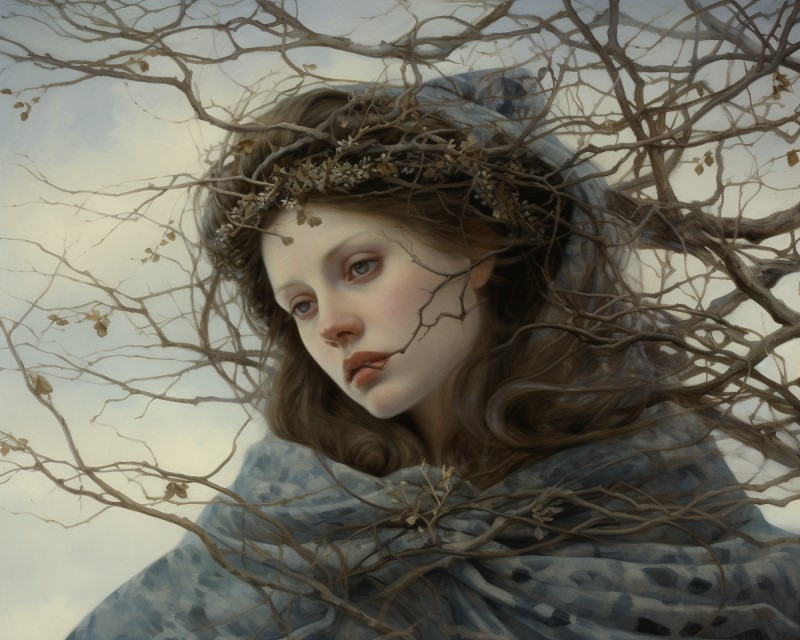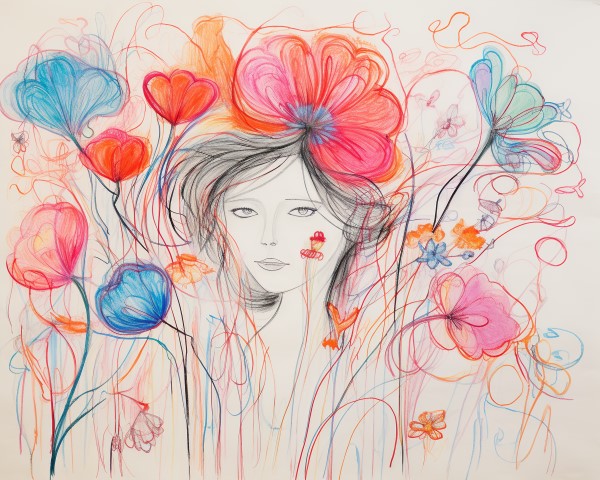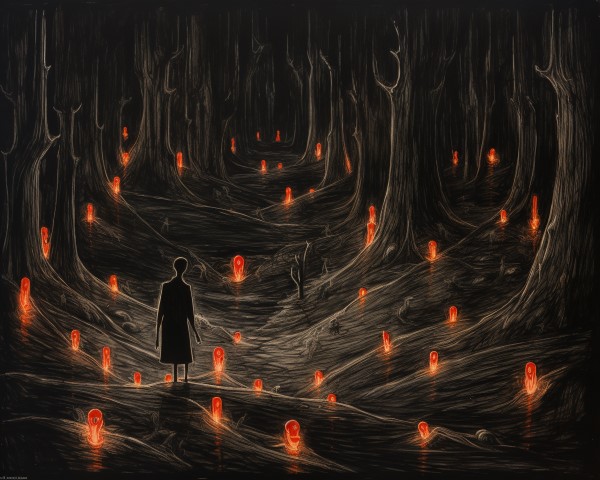KidZone Geography: Greek Mythology
The Tale of Hades and Persephone
Once upon a time, in a world where gods and goddesses roamed the heavens and the earth, there lived a young goddess named Persephone. She was the daughter of Demeter, the goddess of the harvest, and her heart was as pure as the first bloom of spring. Persephone loved to wander through the meadows, her laughter mingling with the rustle of leaves and the songs of birds. She would dance, her feet barely touching the soft, green grass, while her fingers brushed the petals of flowers that bloomed in vibrant hues of red, yellow, and blue, painting the world with the colors of joy.

One day, as Persephone delighted in the beauty of a field adorned with a rainbow of wildflowers, the earth beneath her suddenly split open. From this chasm emerged Hades, the god of the underworld, riding a magnificent chariot pulled by four ebony horses. Hades, who ruled over the realm of shadows and spirits, was captivated by Persephone's innocence and beauty. The moment he laid eyes on her, surrounded by the light of the sun and the melody of nature, he knew he wanted her to be the queen of his dark and silent kingdom.
In a whirlwind of emotions, Hades swept Persephone into his chariot, and together they descended into the depths of the underworld, a place where the sun's warm embrace could not reach. The underworld was a realm of contrasts, where the stillness of the air was unbroken by the sounds of life, and the colors were muted, a world painted in shades of gray and soft, whispered shadows.

Persephone, with her heart filled with longing for the sunlit world above, found herself in a palace as grand as it was somber. The halls were vast, and the high ceilings were adorned with crystals that shimmered like stars in the night sky, casting gentle glows across the marble floors. Despite its beauty, the palace felt cold and lonely, a reflection of the realm it stood within.
Demeter, upon realizing her beloved daughter was missing, searched the earth in despair. As she wandered, her sorrow was so great that the once fertile lands turned barren, and the leaves on the trees withered and fell, leaving the world in a state of unending winter. The joy and colors of the earth faded, leaving behind a canvas of whites and grays, a world holding its breath, waiting for the return of its lost warmth.

Meanwhile, in the underworld, Persephone discovered a garden, a curious oasis amidst the shadows. Here, even in the absence of sunlight, flowers bloomed in soft, ethereal lights, their colors muted yet beautiful, like the gentle hues of dawn. Among these flowers, there was one that caught her eye, a pomegranate tree, its fruits rich and red as the deepest sunset.
In her loneliness, Persephone reached out and plucked a pomegranate, tasting its sweet, ruby-red seeds. Little did she know, by eating the fruit of the underworld, she was bound to it, a rule set by the ancient laws that governed the gods and the earth.

When Demeter learned of her daughter's fate, she pleaded with Zeus, the king of the gods, to return Persephone to the world above. Moved by Demeter's grief and the plight of the earth, Zeus decreed that Persephone would spend part of the year with Hades and part with her mother. When Persephone walked the earth with Demeter, the world would blossom into spring and summer, bursting with life and color. But when she returned to the underworld, fall and winter would cloak the world, a reminder of the delicate balance between light and shadow.
And so, the cycle of the seasons was born. Each year, when Persephone returns to the world above, the earth awakens, and the meadows and forests come alive with the laughter of flowers and the songs of birds. The world dresses in a myriad of colors, inviting all to dance in the celebration of life. And when it's time for her to return to Hades, the earth dons a cloak of reds, oranges, and browns, painting a picture of serene beauty in preparation for the quiet stillness of winter.
The tale of Persephone and Hades teaches us about the cycles of life, the balance between light and darkness, and the enduring power of love and hope. It's a story that invites us to see the beauty in every beginning and every end, in the vibrant colors of life and the tranquil shades of rest, reminding us that after every winter, spring is sure to follow, bringing with it the promise of new life and endless possibilities.
Artwork inspired by this myth:


